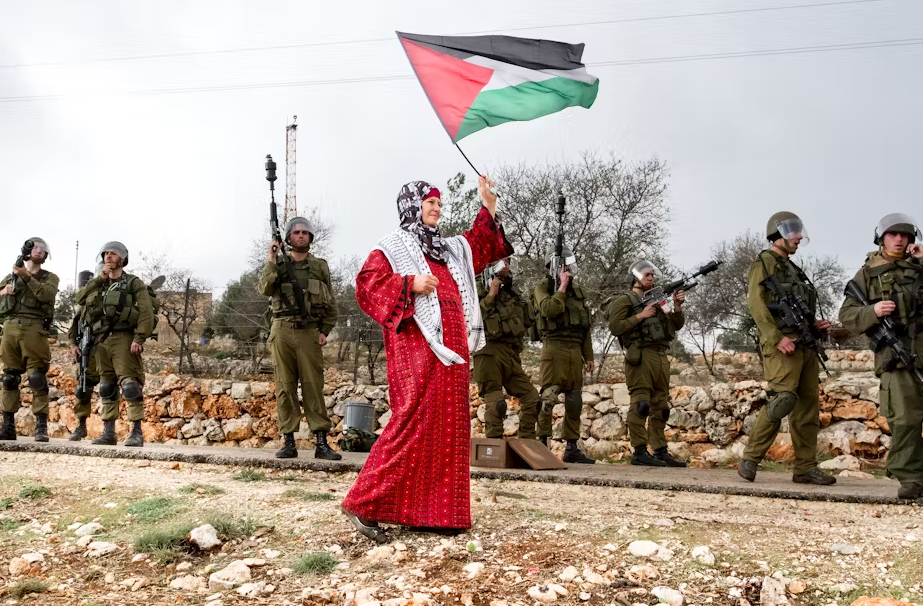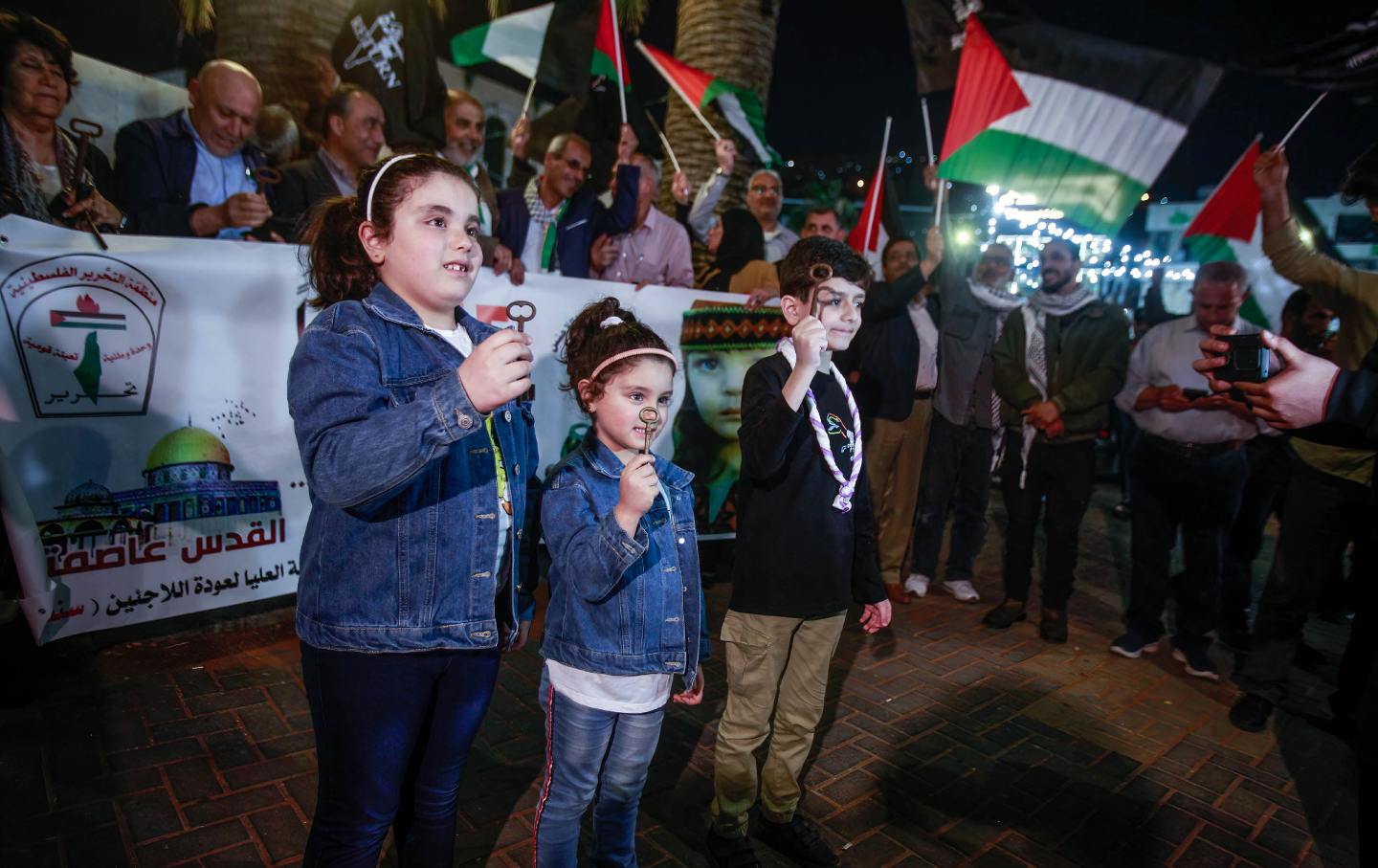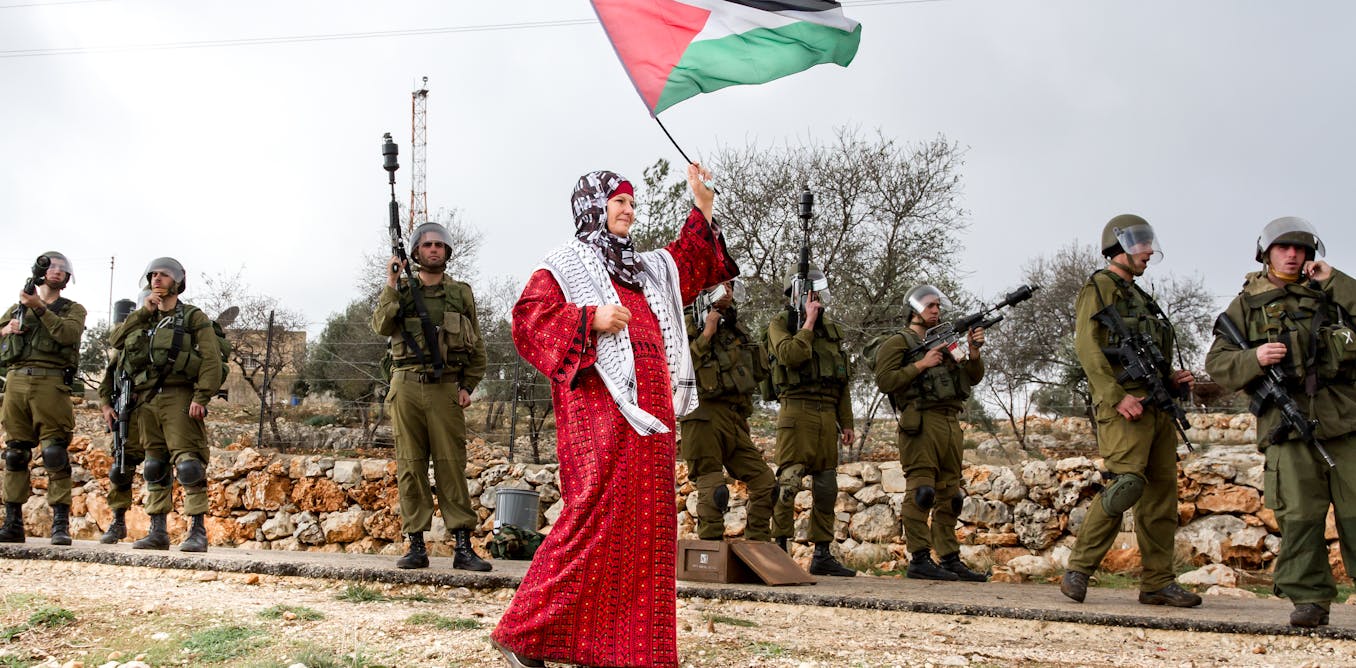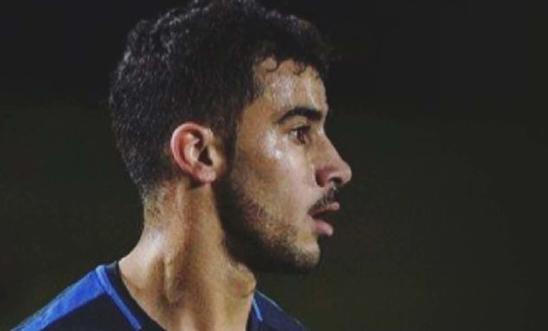Palestine's History of Nonviolent Resistance: A Legacy of Defiance and Hope

By Beneath The Olive Tree | 5-11-2024
Palestine’s story of resistance is often portrayed solely through the lens of violent conflict, yet a profound legacy of nonviolent resistance runs deep in Palestinian society. This history, marked by boycotts, peaceful protests, and international solidarity movements, reveals a complex struggle for justice that spans more than a century. From the early days of British Mandate Palestine to the ongoing Great March of Return, Palestinians have repeatedly mobilized in peaceful resistance, despite facing severe repression and marginalization.
Early Roots of Nonviolent Resistance
The roots of Palestinian nonviolent resistance trace back to the 1920s, as Palestinians opposed the British Mandate’s support of Zionist settlement. Palestinian society, fearing marginalization and dispossession, organized peaceful protests, boycotts, and petitions to bring international awareness to their plight. Prominent figures, such as Musa Kazim al-Husseini, led the movement by organizing demonstrations and strikes to oppose land seizures and policies that undermined Palestinian self-determination. These efforts were often met with force, such as the crackdown on a 1933 protest in Jaffa where al-Husseini and others were brutally suppressed.
The Great Revolt and Civil Disobedience
The 1936–1939 Great Arab Revolt marked another chapter of widespread Palestinian nonviolent resistance. This national movement began with a six-month general strike that crippled the economy and showcased the Palestinians' determination to resist British colonial rule and Zionist expansion. Despite some violent outbreaks, this period was notable for its mass participation and its foundation in civil disobedience, as Palestinians engaged in widespread strikes and boycotts of British and Zionist businesses. The movement was met with brutal reprisals by British forces, who employed harsh measures, including demolishing hundreds of homes in Jaffa, to quash the revolt.
The First Intifada: A Civil Resistance Uprising
The First Intifada, which erupted in 1987, became an emblem of Palestinian nonviolent resistance on a global scale. Often remembered for its iconic imagery of stone-throwing youth, the uprising was rooted in a broad range of peaceful activities, including tax refusal, boycotts, and the establishment of local committees to replace Israeli administrative control. The movement represented a strategic shift toward mass civil resistance and challenged the occupation through non-cooperation. However, as highlighted by then-Israeli Defense Minister Yitzhak Rabin’s “break the bones” policy, Israel responded with overwhelming force. According to the human rights organization B'Tselem, more than a thousand Palestinian civilians lost their lives, while tens of thousands were injured and imprisoned.

Boycott, Divestment, and Sanctions (BDS): A Modern Nonviolent Strategy
In 2005, a coalition of Palestinian civil society organizations issued a call for Boycott, Divestment, and Sanctions (BDS) against Israel. Modeled after the anti-apartheid movement in South Africa, the BDS movement encourages boycotting Israeli products, divesting from companies supporting the occupation, and imposing sanctions until Israel complies with international law. The BDS movement has garnered significant international support, including endorsements from academic institutions, religious organizations, and unions worldwide. Despite criticism and opposition, BDS remains a powerful form of nonviolent resistance, aiming to pressure Israel economically and politically to recognize Palestinian rights.

The Great March of Return: Peaceful Protests and International Attention
Beginning in March 2018, thousands of Palestinians in Gaza organized the Great March of Return, a peaceful demonstration calling for an end to the blockade of Gaza and the right of Palestinian refugees to return to their ancestral homes. Demonstrators gathered weekly along the Gaza-Israel border, yet the response from Israeli forces was immediate and harsh. According to the United Nations Human Rights Council report, Israeli forces killed at least 183 Palestinians and injured over 6,000 with live ammunition during these protests. Among the casualties were children, journalists, medics, and persons with disabilities who posed no threat.
The commission noted that while some protesters engaged in symbolic acts such as burning tires or attempting to cut through fences, these actions did not justify the lethal response they faced. The report concluded that the use of force was excessive and in violation of international law, emphasizing that Israel’s conduct may constitute war crimes and crimes against humanity. The UN urged accountability, but the lack of cooperation from Israeli authorities has hindered the inquiry's scope and impact.

A Nonviolent Struggle for Dignity and Rights
Palestinian women have also played a central role in nonviolent resistance, engaging in community organization, protests, and education. As seen during both Intifadas and through movements like the Palestinian Women’s Union, women have consistently stood at the forefront of social and political activism, often facing dual challenges from occupation forces and traditional societal restrictions. Their contribution highlights the depth and diversity of Palestinian nonviolent resistance across gender and generational lines.

Challenges and the Role of International Solidarity
Despite these enduring efforts, international recognition of Palestinian nonviolent resistance has been sporadic. Major media outlets often focus on violent confrontations, obscuring the widespread and persistent efforts toward peaceful resistance. The presence of new media and international solidarity movements, however, has begun to amplify Palestinian voices, showcasing the reality of life under occupation and the resilience of nonviolent activists.
For nonviolent resistance to be effective, many advocates argue, it must receive international support and protection. Amnesty International, for instance, has documented the impact of international attention on movements like the Great March of Return, highlighting how accountability for human rights abuses could empower Palestinians to continue their peaceful struggle.
Palestinian nonviolent resistance is not a new phenomenon but a deeply rooted strategy of dignity, resilience, and hope. From the early boycotts and strikes under British rule to the BDS movement and the Great March of Return, Palestinians have continuously pursued nonviolent methods to resist oppression, maintain their identity, and demand their rights. This legacy of peaceful resistance underscores a powerful message: the fight for justice and freedom need not be waged with arms but through steadfast adherence to principles and unyielding hope for a just future.
Sources:




https://carnegieendowment.org/sada/2012/06/palestine-a-history-of-nonviolence?lang=en
https://www.ohchr.org/en/hr-bodies/hrc/co-iopt/report2018-opt




Member discussion